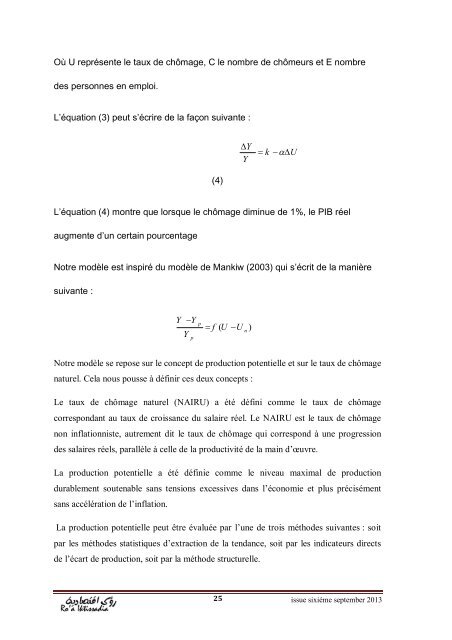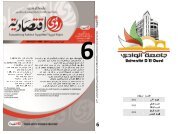مجلة رؤى اقتصادية / Roa Iktissadia REVIEW
International and specialized academic journal, quarterly, published by the Faculty of Economic and Commercial Sciences and the Science of management, University of Hamma Lakhther Eloued. The Magazine of Roa Iktissadia aimed at to contribute to the development and dissemination of knowledge, and the publication of original scientific research, scientific reviews in the fields of research and studies in the fields of economics, management and trade. ــــــــــــــــــــــــــــــــــــــــــــــــــــــــــــــــــــــــــــــــــــــــــــــــــــــــــــــــــــــــــــــــــــــــــــــــــ دورية أكاديمية محكمة دولية ومتخصصة، سداسية، تصدر عن كلية العلوم الاقتصادية والتجارية وعلوم التسيير جامعة الشهيد حمه لخضر الوادي. ترمي مجلة رؤى اقتصادية إلى الإسهام في تطوير المعرفة ونشرها، وذلك بنشر البحوث العلمية الأصيلة، والمراجعات العلمية في مجالات البحوث والدراسات في مجالات الاقتصاد والتسيير والتجارة.
International and specialized academic journal, quarterly, published by the Faculty of Economic and Commercial Sciences and the Science of management, University of Hamma Lakhther Eloued.
The Magazine of Roa Iktissadia aimed at to contribute to the development and dissemination of knowledge, and the publication of original scientific research, scientific reviews in the fields of research and studies in the fields of economics, management and trade.
ــــــــــــــــــــــــــــــــــــــــــــــــــــــــــــــــــــــــــــــــــــــــــــــــــــــــــــــــــــــــــــــــــــــــــــــــــ
دورية أكاديمية محكمة دولية ومتخصصة، سداسية، تصدر عن كلية العلوم الاقتصادية والتجارية وعلوم التسيير جامعة الشهيد حمه لخضر الوادي.
ترمي مجلة رؤى اقتصادية إلى الإسهام في تطوير المعرفة ونشرها، وذلك بنشر البحوث العلمية الأصيلة، والمراجعات العلمية في مجالات البحوث والدراسات في مجالات الاقتصاد والتسيير والتجارة.
You also want an ePaper? Increase the reach of your titles
YUMPU automatically turns print PDFs into web optimized ePapers that Google loves.
Où U représente le taux de chômage, C le nombre de chômeurs et E nombre<br />
des personnes en emploi.<br />
L’équation (3) peut s’écrire de la façon suivante :<br />
Y<br />
Y<br />
k <br />
U<br />
(4)<br />
L’équation (4) montre que lorsque le chômage diminue de 1%, le PIB réel<br />
augmente d’un certain pourcentage<br />
Notre modèle est inspiré du modèle de Mankiw (2003) qui s’écrit de la manière<br />
suivante :<br />
Y Y<br />
Y<br />
p<br />
p<br />
f ( U U )<br />
n<br />
Notre modèle se repose sur le concept de production potentielle et sur le taux de chômage<br />
naturel. Cela nous pousse à définir ces deux concepts :<br />
Le taux de chômage naturel (NAIRU) a été défini comme le taux de chômage<br />
correspondant au taux de croissance du salaire réel. Le NAIRU est le taux de chômage<br />
non inflationniste, autrement dit le taux de chômage qui correspond à une progression<br />
des salaires réels, parallèle à celle de la productivité de la main d’œuvre.<br />
La production potentielle a été définie comme le niveau maximal de production<br />
durablement soutenable sans tensions excessives dans l’économie et plus précisément<br />
sans accélération de l’inflation.<br />
La production potentielle peut être évaluée par l’une de trois méthodes suivantes : soit<br />
par les méthodes statistiques d’extraction de la tendance, soit par les indicateurs directs<br />
de l’écart de production, soit par la méthode structurelle.<br />
25 issue sixiéme september 2013





